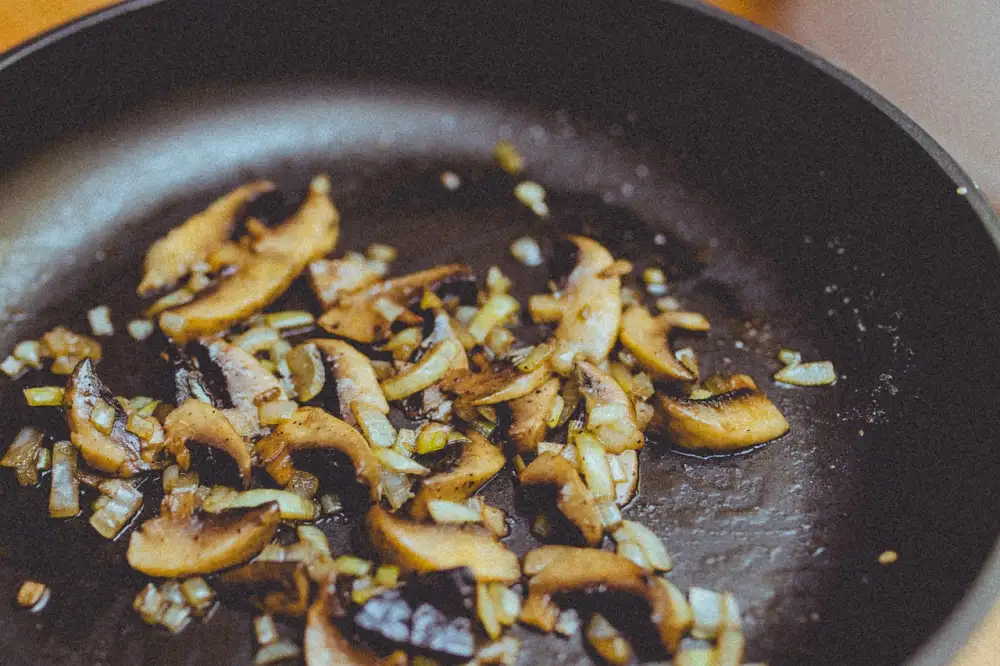Master the Art of Cast Iron Skillet Cleaning: A Step-by-Step Guide for a Spotless Pan

Cast iron skillets are prized for their durability and ability to retain heat, making them a staple in many kitchens. Proper cleaning and maintenance are essential to ensure your cast iron skillet remains in top condition for years to come. By following the right techniques, you can keep your skillet spotless and well-seasoned, ready to create delicious meals each time you cook. In this guide, we will walk you through the steps to master the art of cast iron skillet cleaning.
Materials Needed for Cleaning
To properly clean a cast iron skillet, you will need the following materials:
1. Mild dish soap
2. Non-abrasive scrubber or sponge
3. Coarse salt or baking soda
4. White vinegar
5. Paper towels or clean cloth
6. Vegetable oil or shortening for seasoning
7. Stiff brush or paper towel for applying oil
Having these items on hand will ensure that you can effectively clean and maintain your cast iron skillet for years to come.
Steps to Clean a Cast Iron Skillet
**Steps to Clean a Cast Iron Skillet**
Cleaning a cast iron skillet may seem daunting, but with the right approach, it can be a simple and rewarding task. Follow these steps for a spotless pan:
**3.1 Initial Cleaning:**
After use, rinse the skillet with hot water and scrub gently using a stiff brush to remove any food residue. Avoid using soap as it can strip away the seasoning.
**3.2 Stubborn Residue Removal:**
For stubborn residue, create a paste of kosher salt and water. Scrub the affected areas with this paste using a sponge or paper towel until the residue is lifted.
**3.3 Drying and Seasoning:**
Thoroughly dry the skillet with a clean towel to prevent rusting. Once dry, apply a thin layer of oil (such as vegetable oil or flaxseed oil) to the entire surface of the skillet, including the handle. Place it upside down in an oven at 350°F for an hour to allow the oil to polymerize and create a protective layer.
By following these steps, you can ensure your cast iron skillet remains in top condition for years to come.
1. Initial Cleaning
Before using your cast iron skillet for the first time, it is crucial to give it an initial cleaning to remove any factory residues or impurities. Start by washing the skillet with warm water and a small amount of mild dish soap. Use a sponge or brush to gently scrub the surface, making sure not to use anything abrasive that could damage the seasoning.
Once cleaned, rinse the skillet thoroughly with water to remove all soap residue. Avoid soaking the pan in water for extended periods as this can lead to rusting. After rinsing, dry the skillet completely using a clean towel or by placing it on a stovetop over low heat until all moisture has evaporated.
With this initial cleaning, your cast iron skillet is now ready to be seasoned and used for cooking delicious meals that will only enhance its flavor over time.
2. Stubborn Residue Removal
When dealing with stubborn residue on your cast iron skillet, it's important to tackle it carefully to avoid damaging the seasoning. One effective method is to sprinkle coarse salt onto the pan while it's still warm. Using a paper towel or a gentle brush, scrub the salt into the residue in a circular motion. The abrasiveness of the salt helps to lift off stuck-on food particles without harming the pan's surface. After scrubbing, rinse the skillet with warm water and dry it thoroughly before proceeding to the next step of seasoning. Remember never to use harsh chemicals or metal scouring pads, as they can strip away the seasoning you've worked hard to build up on your cast iron skillet.
3. Drying and Seasoning
After cleaning your cast iron skillet, it's crucial to dry it thoroughly to prevent rusting. Use a clean towel or paper towel to wipe away any excess moisture. Place the skillet on a stove burner set to low heat for a few minutes to ensure all moisture evaporates. Once completely dry, apply a thin layer of cooking oil (such as vegetable oil or flaxseed oil) to the entire surface of the skillet, inside and out. This process helps maintain the seasoning and prevents rust from forming. Remember, a well-seasoned cast iron skillet will only get better with time and proper care.
Tips for Maintaining a Seasoned Cast Iron Skillet
1. **Avoid using soap:** To preserve the seasoning on your cast iron skillet, avoid using soap when cleaning it. Soap can strip away the seasoning that gives the skillet its non-stick properties.
2. **Re-season regularly:** Over time, the seasoning on your cast iron skillet may wear off. To maintain its non-stick surface, re-season your skillet by applying a thin layer of oil and heating it in the oven.
3. **Store properly:** Store your cast iron skillet in a dry place to prevent rusting. If stacking multiple pans, place a paper towel or cloth between them to avoid scratching the seasoning.
4. **Use gentle utensils:** Avoid using metal utensils that can scratch the seasoning on your skillet. Opt for wooden or silicone utensils instead to prolong the life of your seasoned surface.
By following these tips, you can ensure that your cast iron skillet remains well-seasoned and continues to provide excellent cooking results for years to come.
Common Mistakes to Avoid
1. **Using Soap**: One common mistake is using soap to clean a cast iron skillet. Soap can strip away the seasoning that has built up on the pan, affecting its non-stick properties.
2. **Soaking for Prolonged Periods**: Avoid soaking your cast iron skillet for extended periods as it can lead to rusting. Instead, opt for gentle cleaning methods to preserve the pan's seasoning.
3. **Abrasive Cleaning Tools**: Using abrasive materials like steel wool or harsh scrubbing pads can scratch and damage the surface of your cast iron skillet, compromising its non-stick qualities.
4. **Storing a Wet Pan**: Storing a wet cast iron skillet can cause it to rust. Ensure the pan is completely dry before storing it to maintain its quality and prevent corrosion.
By avoiding these common mistakes, you can ensure your cast iron skillet remains in top condition for years to come, ready to create delicious meals with ease.
**Conclusion and Final Thoughts**
In conclusion, mastering the art of cast iron skillet cleaning is essential to ensure the longevity and performance of your cookware. By following the steps outlined in this guide and incorporating proper maintenance techniques, you can keep your cast iron skillet in top condition for years to come. Remember, a well-seasoned cast iron skillet not only enhances the flavor of your dishes but also adds a unique touch to your culinary creations. So, embrace the beauty of cooking with cast iron and enjoy the delicious results it brings to your table.
Published: 10. 03. 2024
Category: Home



